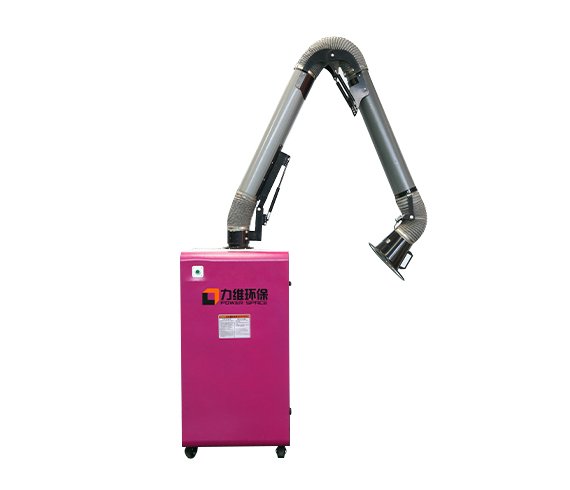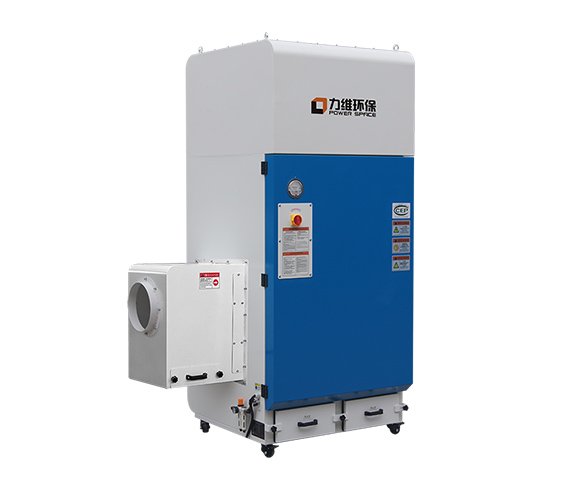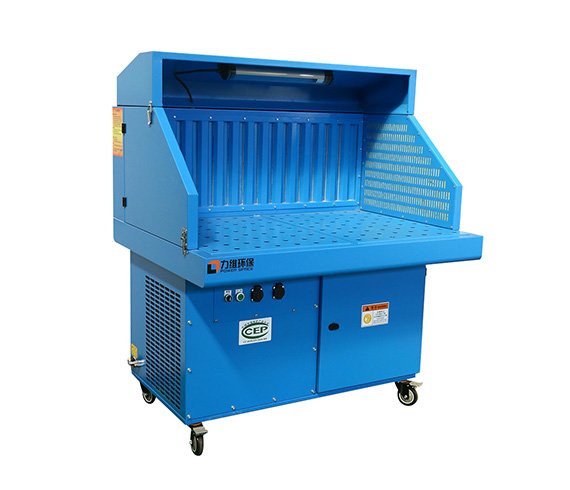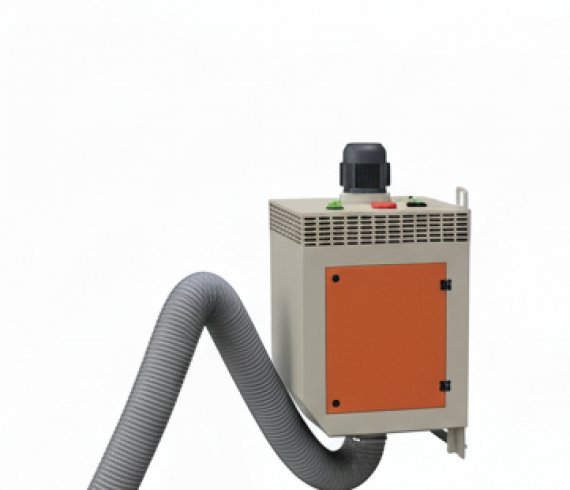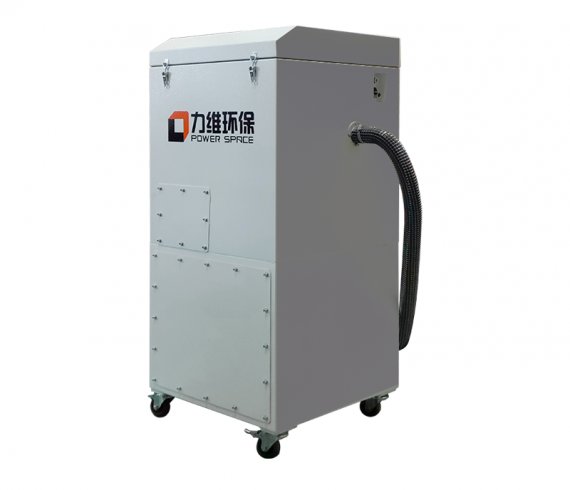News
Power Space tailor-made dust removal plan for you
Maximizing Efficiency with a Portable Fume Extractor: Tips and Tricks for Welders
This guide explores how a portable fume extractor does more than just clean the air—it streamlines your workflow, saves you money, and makes your entire operation more flexible and productive.
Redefining Efficiency: Beyond Just Clean Air
To understand the value of a portable unit, we must first expand the definition of "efficiency" beyond just its filtration capabilities. In a modern workshop, efficiency is a four-part equation:
Operational Efficiency (Time): How much time is spent on setup, cleanup, and maintenance versus value-added work?
Spatial Efficiency (Flexibility): Can your workshop layout adapt to new jobs quickly without costly re-installation of fixed equipment?
Cost Efficiency (Energy & Consumables): Are your energy bills and consumable costs (like filters) as low as possible?
Safety & Capture Efficiency (Compliance): Is your team protected in the most effective way, ensuring compliance and preventing health-related downtime?
A high-quality portable fume extractor is the only solution that provides a powerful, positive answer to all four of these questions.
The Core Principle: Why Source Capture is the Most Efficient Solution
The single most efficient and effective method for managing welding, grinding, or cutting fumes is source capture. This means capturing the hazardous particulate at the very point it is created, before it has a chance to escape into the welder's breathing zone or the general facility air.
Trying to clean the air after the fume has dispersed is fundamentally inefficient. It’s like trying to mop up a spill in the middle of a room instead of just putting a bucket under the leak.
Air-clean Tower: This system is highly efficient. They run for hours trying to cycle the entire volume of air in your shop. Critically, they can protect the operator's breathing zone. LW16 Series are powerful tool to clean factory air.
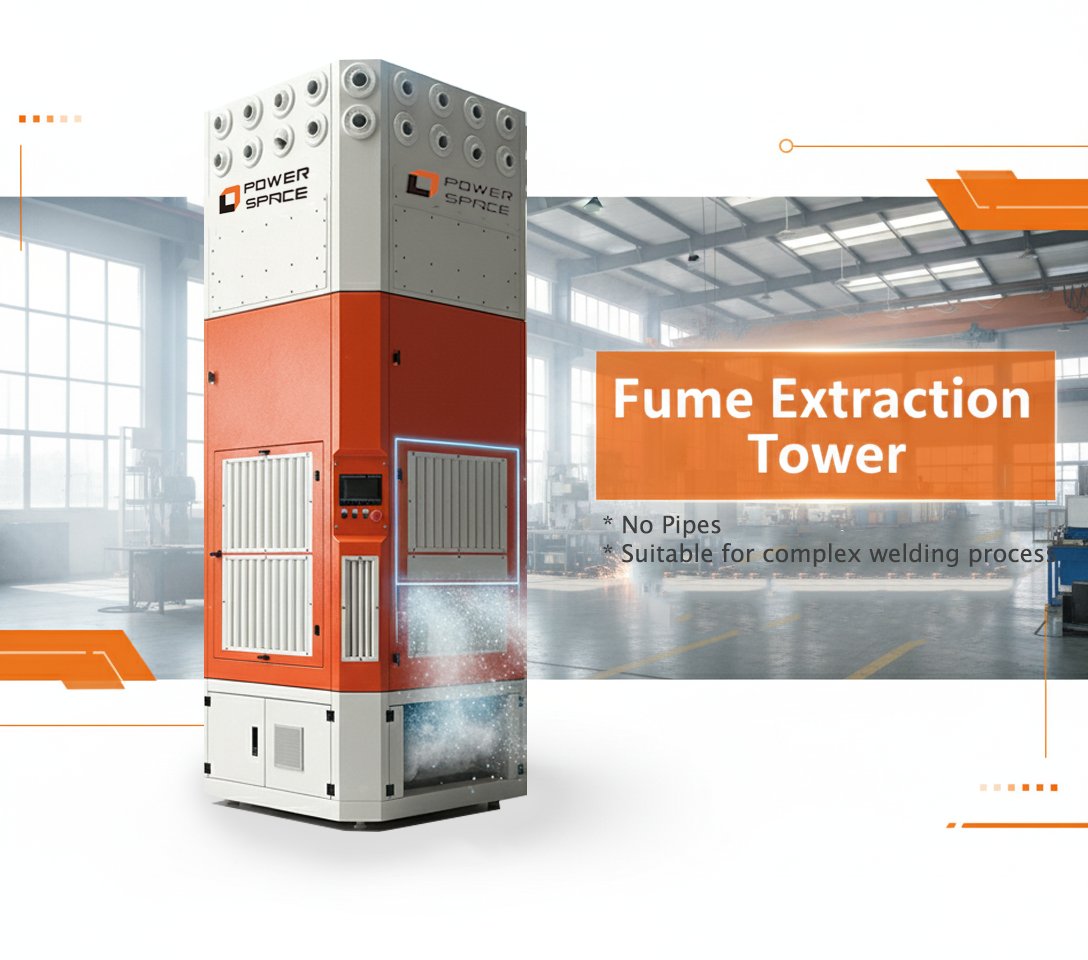
Portable Source Capture: A portable extractor uses a much smaller, more efficient motor to capture a high concentration of fumes. It immediately removes the hazard, protecting the operator and preventing the contaminant from ever settling on surfaces, which dramatically reduces overall workshop cleaning time.

Key Features That Drive Portable Fume Extractor Efficiency
The design of a modern portable fume extractor is a masterclass in efficiency. Every component is engineered to reduce effort, time, and cost.
1. The Flexible Suction Arm: Maximizing Uptime
The ergonomic, self-supporting flexible arm is a primary driver of operational efficiency. In a busy shop, a welder cannot afford to stop work and spend minutes wrestling with a clumsy, poorly designed arm. A high-quality arm, like those on Power Space units, is designed for:
One-Handed Positioning: The arm can be moved and positioned with a single hand and will stay exactly where it is placed.
360-Degree Reach: It can be precisely aimed at any weld joint, ensuring optimal capture without interfering with the work.
Efficiency Gain: This simple, ergonomic design saves seconds on every reposition, adding up to significant time savings over a shift and ensuring the arm is actually used correctly.

2. Automated Filter Cleaning: Slashing Maintenance Time & Consumable Costs
This is perhaps the most significant cost-efficiency feature. Older or cheaper models use simple filters that clog quickly, leading to:
Reduced suction performance.
Frequent, costly filter replacements.
Downtime for manual filter cleaning.
A truly efficient portable unit features an automatic pulse-jet filter cleaning system. A differential pressure gauge monitors the filter saturation. When it detects a clog, it automatically releases a powerful burst of compressed air from inside the filter, dislodging the caked-on dust, which falls harmlessly into a collection tray.
Efficiency Gain:
Reduces Downtime: No need to stop production for manual cleaning.
Saves Money: Dramatically extends the life of the filter cartridge, slashing your annual consumable costs.
Maintains Performance: Ensures the unit is always operating at peak suction power.
3. Mobility & Compact Footprint: The Ultimate in Spatial Efficiency
A fixed, ducted fume extraction system is a permanent liability. The moment your workshop layout needs to change, it becomes an expensive obstacle that must be removed and re-installed.
A portable dust collector on durable casters offers perfect spatial efficiency.
No Installation Costs: Roll it off the pallet, plug it in, and it's working in minutes.
Adapts to Your Workflow: Move it between workstations, into tight booths, or to a specific project in the corner of the shop.
Frees Up Floor Space: When not needed, it can be rolled into storage, freeing up valuable floor space for other tasks.
The Hidden Inefficiencies of the "Do Nothing" Approach
The most inefficient strategy of all is failing to implement proper fume control. The "cost savings" of not buying a machine are quickly erased by massive hidden costs:
Health & Downtime: Operator illness, sick days, and the long-term risks of worker's compensation claims are a direct drain on profitability.
Equipment Damage: Conductive metallic dust generated from welding and grinding can settle in your other expensive equipment (CNC machines, robotic controllers), causing short circuits, abrasion, and premature failure.
Wasted Labor: A shop filled with dust and fume residue requires hours of non-value-added cleaning time. A source capture system keeps the entire facility cleaner, allowing your team to focus on production.
How to Personally Maximize Your Portable Fume Extractor's Efficiency
Even with a high-tech unit, operator behavior is key. Follow these best practices:
Position the Hood Correctly: The hood should be positioned 6-10 inches (15-25 cm) from the weld arc. This is the "sweet spot" for capturing the maximum amount of fume without interfering with the work.
Use the "Fume Rises" Rule: For most welding, fumes rise. Position the hood slightly above and to the side of the arc.
Empty the Dust Drawer: Regularly check and empty the dust collection tray. A full tray can impede airflow and reduce the effectiveness of the pulse-clean system.
Monitor the Gauge: Pay attention to your filter pressure gauge. If it's consistently high even after a pulse-clean, it's a sign that the filter has reached the end of its long life and needs to be replaced.
Conclusion: A Smart Investment in a Leaner Operation
A portable fume extractor is a powerful tool for building a leaner, safer, and more profitable operation. It directly enhances your operational efficiency by saving time on setup and cleaning. It boosts your spatial efficiency by adapting to any workflow. And it drives cost efficiency by reducing energy consumption and filter replacement costs.


